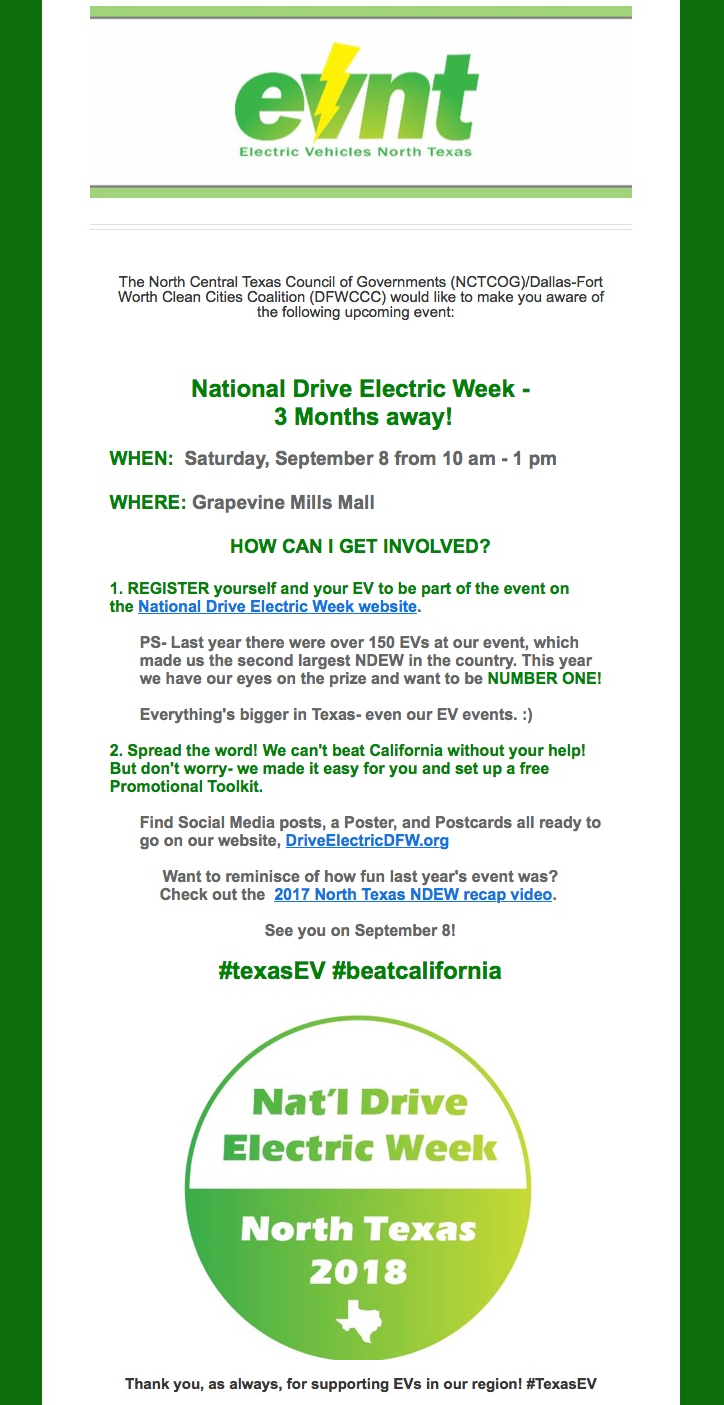About the author
An accidental EVangelist: On my way to work at Apple one morning, my car was rear-ended (and totaled) by an SUV, driven by a guy playing with his smartphone.
This led me to get my first plug-in vehicle.
I started blogging about my experiences immediately.
A year later, in 2013, I was hired by the dealership as their "EVangelist."
I became a board member with the Texas Electric Transportation Resources Alliance (www.TxETRA.org) and perform public speaking in the DFW area regarding electric vehicles and environmental issues.
I also teach others how to sell plug-in vehicles or manage EV sales.
I'm on a mission.


There will be a lot of new EVs out in 2019 and 2020:
https://www.youtube.com/watch?v=7a07E_BEc3o&t=61s&list=LLx0quQVCuvZiP-nSZoemF7w&index=4
It looks like most of them will be from Chinese and European manufacturers.
Will America’s legacy auto manufacturers survive after market demand shifts to EVs?
Henrik Fisker (the Fisker Karma guy) has filed patents on a solid state battery which will provide EVs a 500 mile range and which can be re-charged in ONE MINUTE. He expects it to be available commercially for EVs in 3 to 5 years, earlier for consumer electronics. He expects it to be 1/3rd the cost of current lithium ion batteries.
https://www.youtube.com/watch?v=fhP40Dff04Y
Several companies are working on similar battery innovations. Samsung allegedly has developed one.
Exciting times ahead.
One interesting tidbit: Charging that fast requires so much power that one manufacturer stated that their extreme high speed chargers would be equipped with cooled charger cables!
Who will want an ICE vehicle after autos with these fantastic batteries arrive on the market? Allegedly, they will be cheaper than their ICE equivalents.
Who wanted a slide rule after electronic calculators and computers arrived? Museums.
My guess: somewhere between 2021 to 2023 will be the start of the ICE killer years, and EV adoption will be very rapid. What’s your guess about the timing, Buzz?
Here’s what I originally predicted, in January 2015: https://www.theev-angelist.com/tipping-point/
Here’s an update, from April of this year: https://www.theev-angelist.com/predictions-revisited-or-just-call-me-nostradamus/
(My memory is really bad.)
Key paragraph in the update IMO:
“Things that could cause this to accelerate include: a substantial rise in gasoline prices, breakthroughs in charging/batteries, evidence and/or consequences of global climate change becoming apparent, better advertising by EV manufacturers, better educated consumers and the steady decrease in manufacturing costs.”
Battery breakthroughs (a lot cheaper to manufacture, allowing much greater range and much faster charging) have been made but will not yield a commercial product for at least another 2 or 3 years from what I have seen (on YouTube) or read.
Honest, frank advertising would help. Apparently, legacy auto makers won’t do aggressive EV advertising for fear of hurting ICE sales even though the planet is burning up. Something is wrong with an economic system that rewards short-term profits over long term sustainability. Maybe the people should have a say about what products the auto makers should be selling.
New impressive EV company on the rise: Byton. Former BMW CEO and president. First product to be an affordable SUV, out ln 2020.
https://www.youtube.com/watch?v=hKb0eiWuriE&list=LLx0quQVCuvZiP-nSZoemF7w&index=13
Another reason legacy car manufacturers may be dragging their feet on EVs: massive loss of jobs.
German Government Warns Of Massive Job Loss Due To Electric Cars
“Assuming that all-electric and hybrid cars will take respectively 25% and 15% of production by 2030, some 75,000 jobs could be lost in the German automotive industry. Higher plug-in adoption would cut more than 100,000 jobs.
“The reason behind such expectations are simpler production of plug-in cars compared to gasoline or diesel cars, as they have only a fraction of parts and a quicker assembly process (by around 30%).
“The EV powertrain utilizes apparently only about one-sixth of the components of an ICE powertrain. Battery production will require only a fifth of the workforce, when compared with an engine plant (per set, we believe).”